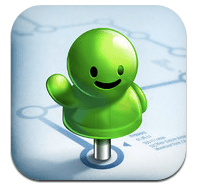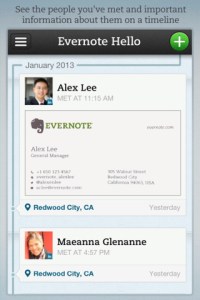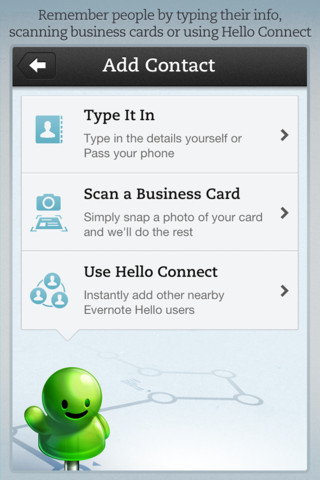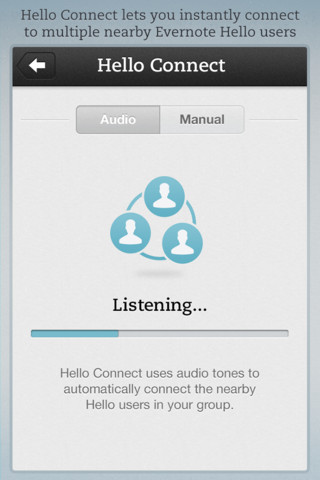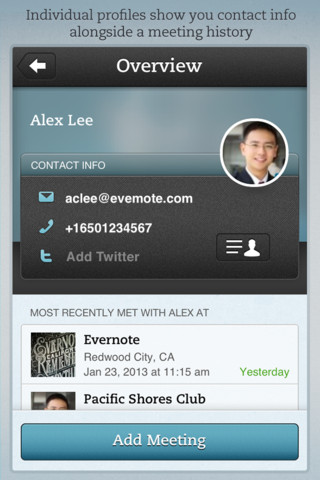Evernote today is releasing a dramatically updated 2.0 version of Hello for iOS, the app for remembering details about the people you meet that first launched just over a year ago in December 2011.
The Hello 2.0 app has a host of new features, including business card scanning and “Evernote Connect,” which uses audio tones to transfer information among phones that are in proximity to each other and running Hello. The whole idea, Evernote CEO Phil Libin said in an interview this week, is to make the usage of Hello more natural and fulfill its original promise to be a dramatically rethought kind of address book.
“Personally, I’m really bad with names and faces and context, and it’s a persistent thing,” Libin said. “The technologies I’ve used before are address books, but they’re alphabetical lists of people. You don’t remember people alphabetically — you want the context. Where did I meet them, what did we talk about?”
Lessons learned from version 1
While Evernote meant to tackle this all in Hello 1.0, the app’s first design had some flaws. For one thing, it encouraged you to ask others to input their contact information into your phone. “That whole idea just turned out to not be something that people want to do. It’s awkward to hand over your phone to someone else,” Libin said. “A lot of the feedback was that people loved the promise of Hello, but some of it was too weird.”
So with 2.0, the Hello team looked for ways to acknowledge that people still aren’t crazy about typing in a bunch of other people’s contact information, but they also did not want to hand their phones over to have someone else do it for them — and this is where the business card scanning comes in. Hello 2.0 also lets you add contacts by importing them from your calendar entries, or by simply typing in their email address; the app scans Facebook and LinkedIn to find the likely first and last name and any other available data about them.
Evernote Connect is probably the most impressive new feature within Hello. When two or more phones are running the app in the same room, the phones can exchange contact information and log that an event together is happening within seconds by sending call-and-response audio tones to each other. It’s a fun “bloop bloop” sound that could well become the new handshake to kick off business meetings among Evernote devotees.
A farm team for new technologies
But the real story here is larger than just this app, Libin says. Along with other apps such as Food, Evernote sees Hello as one of its “innovation test beds” where it can try out new technologies that could well later end up in Evernote’s core note-taking app. “Hello is the first place where we’re introducing content recognition of documents with word recognition of images, proximity-based automatic data exchange, the grouping of the home screen not just by people but by people you’ve met roughly at the same time roughly same place,” Libin said. “There are five or six big ideas that are rolling out in Hello first that we could bring across the rest of our products in the future.”
Another key new concept for Evernote that we’re seeing in Hello is a new emphasis on people as a discrete kind of data set. “Evernote needs to be smarter about people,” Libin said. “A person is not like any other data I have in my Evernote account. We are working toward having all the the core Evernote apps be smart about people.”
But he’s quick to note that this new emphasis on the human does not mean that Evernote is taking on the Facebooks of the world. “In our DNA, we are not a social company, and are not trying to build anything social. We’re not building a social graph or a social network. We want Evernote to be your external brain — something to make you smarter.”
Here is a video of Hello 2.0 in action:
